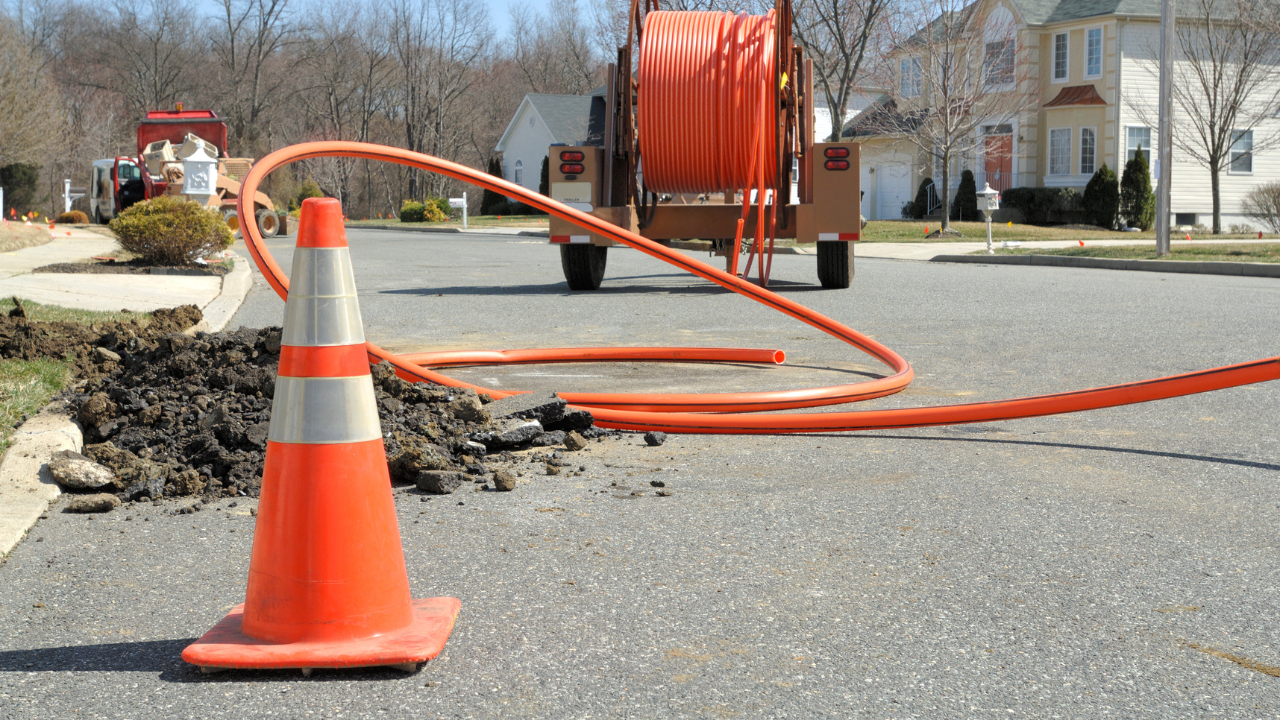
Key Takeaways:
When you’re digging or excavating on your private property, the last thing you want is to hit something important underground. Whether it’s water lines, gas lines, or fiber optic cables, damaging them can cause major headaches—expensive repairs, project delays, and even safety hazards. That’s where underground utility locating services come in. These services help you find the exact locations of buried utilities before you start digging, saving you time, money, and stress.
Accurately locating telecommunication and fiber optic cables is essential to avoid costly network disruptions and service outages. Damaging these lines during construction or excavation can lead to widespread communication failures, expensive repairs, and project delays. Professional cable locating services help identify and protect critical infrastructure, ensuring smooth operations and safeguarding both public and private networks. Prioritizing cable locating is key to keeping projects efficient and connected.
Locating telecom and fiber optic cables before digging is crucial to preventing costly damage, service outages, and project delays. These cables are vital for internet, phone, and data communications—and damaging them can disrupt businesses, emergency services, and entire communities. Accurate cable locating protects critical infrastructure, reduces repair costs, and keeps construction projects safe and on schedule.
Private utility locating services are so important. They use advanced technology to map out underground facilities so you can avoid disasters. Whether you’re a project manager handling a big construction job or a homeowner putting in a new fence, knowing where underground infrastructure is located keeps everyone safe and keeps your project moving smoothly.
Fiber optic cables are a bit different from other underground utility lines. They’re thin, often made of glass or plastic, and don’t carry electrical signals that traditional locating equipment can easily detect. That makes them trickier to find compared to gas lines or electric lines.
But here’s the thing—damaging a fiber optic network can be way more costly than you think. These cables carry internet, phone, and data signals for businesses and homes. Cutting one can disrupt services for hundreds or even thousands of people. And trust me, the companies that own these cables won’t be happy if you’re the reason their customers lose connectivity.
That’s why specialized utility locating services use art equipment designed to detect non-metallic utilities like fiber optics. They can pinpoint their location accurately, so you don’t accidentally slice through one during your excavation projects.
So, how do these services actually find buried utilities? It’s not just guesswork—it’s a mix of advanced technology and expertise. Here’s a quick breakdown of the process:
First, the utility locator will review any existing utility mapping or records of the area. Sometimes, utility companies or city records have info on where underground pipes and cables are supposed to be. But here’s the catch—these records aren’t always accurate. Lines get moved, added, or forgotten over time.
That’s why the next step is using detection tools. For metallic lines like electric lines or water pipes, electromagnetic locators work great. But for non-metallic utilities (like plastic sewer lines or fiber optic cables), they might use ground-penetrating radar (GPR) or other specialized tools.
Once they’ve scanned the area, they’ll mark the exact locations of all underground facilities with paint or flags. This gives you a clear picture of where it’s safe to dig—and where you should avoid. Some services even provide a permanent record of the findings, which is super helpful for future projects.
You might be wondering—why do I need a private utility locator if the city or utility companies already mark public lines? Good question.
Public utilities (like main water lines, gas lines, and power cables) are usually marked for free by calling 811 before digging. But here’s the thing—they only mark the lines they own. If you have private utility lines (like a septic system, irrigation pipes, or fiber optic cables running to your building), those won’t be included.
That’s where private underground utility locating services come in. They specialize in finding the lines that aren’t covered by public locates. So, if you’re digging on private property, you’ll want both the public marks and a private utility locating service to cover all your bases.
Skipping utility locating might seem like a way to save time or money upfront, but trust me—it’s not worth the risk. Hitting an underground pipe or cable can lead to:
A good utility locator service helps you avoid all of that. They make sure you know exactly what’s below the surface before the first shovel hits the dirt.
Pretty much any time you’re digging, you should consider underground utility locating services. Here are some common situations where it’s a must:
Even if you’re just doing a small project, it’s better to be safe than sorry. A single mistake can cost thousands in repairs—way more than what you’d spend on a private utility locating service.
At Bess Utility Solutions, we get how important it is to keep your project on track and avoid unnecessary risks. Our underground utility locating services use the latest advanced technology to find private utility lines accurately. Whether you’re dealing with water lines, gas lines, or fiber optic cables, we’ve got the tools and expertise to help.
We also offer video pipe inspection to check the condition of your underground pipes and septic systems, giving you a full picture of what’s happening below ground. Plus, our reports give you a permanent record of all findings, so you’ll always have the info you need for future work.
Digging without knowing what’s underneath is like driving blindfolded—it’s just asking for trouble. Instead of risking damage, delays, or safety issues, get a professional utility location done first. It’s a small step that saves you from big problems down the road.
If you’ve got an upcoming project and need reliable private locates, give us a call. We’ll make sure your dig site is safe, marked, and ready to go, so you can focus on the work without any nasty surprises.